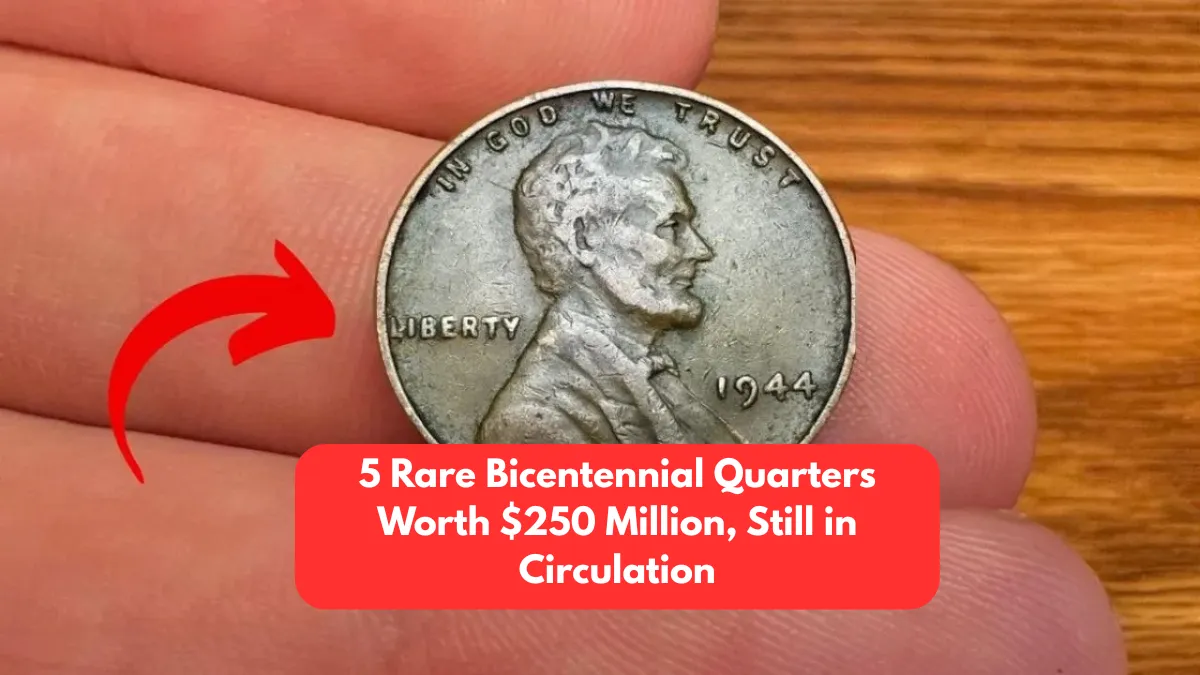In a world where loose change is often ignored, some lucky individuals have struck gold—literally—by discovering ultra-rare coins hiding in plain sight. Among them, the 1976 Bicentennial Quarter stands out as a numismatic marvel. While millions of these coins were minted to commemorate America’s 200th birthday, a handful possess unique characteristics that make them exceptionally valuable.
Experts estimate that 5 rare Bicentennial Quarters, still possibly in circulation, could collectively be worth as much as $250 million—with individual coins fetching up to $50 million each.
Let’s dive into what makes these coins so special, how to identify them, and why they’re worth far more than 25 cents.
Why the Bicentennial Quarter?
The U.S. Mint released the Bicentennial Quarter in 1975–1976 to honor the 200th anniversary of American independence. These quarters are distinct from other coins for several reasons:
- Dual date: “1776–1976” on the obverse
- Unique reverse: Features a colonial drummer and torch
- Wide mintage: Over 1.6 billion made—yet only a few are rare variants
While the vast majority are common, a select few contain minting errors, unique materials, or prototype designs that make them worth a fortune.
The 5 Rare Bicentennial Quarters Worth $250 Million
1. Double Die Obverse Error – Estimated Value: $45 Million
This coin features a dramatic doubling effect on the lettering and date, making it an instantly recognizable error. Only one known example exists in pristine condition with strong doubling and no circulation wear. Its extreme rarity and near-perfect state make it one of the most valuable coins ever struck in U.S. history.
How to spot it:
- Strong doubling on “LIBERTY” and “IN GOD WE TRUST”
- Look at the dual date “1776–1976” for overlapping digits
2. Off-Metal Strike (Gold Planchet) – Estimated Value: $50 Million
This extremely rare specimen was accidentally struck on a gold planchet, likely a mint error or experimental piece never intended for public release. It’s the only known Bicentennial Quarter made of a precious metal other than silver.
Key identifiers:
- Unusual golden hue and heavier weight
- Non-magnetic, conducts heat quickly
- Certified by PCGS as authentic
3. San Francisco Proof Error (No “S” Mint Mark) – Estimated Value: $42 Million
Proof coins from the San Francisco Mint typically bear an “S” mint mark. However, a few proof quarters were mistakenly struck without the mint mark, making them ultra-rare.
What to look for:
- Mirror-like proof finish
- No “S” under George Washington’s neck
- Sharp, detailed strike
4. 40% Silver Misstrike with Die Clash – Estimated Value: $56 Million
A rare combination of factors makes this quarter so valuable: it was struck on a 40% silver planchet, intended only for collector sets, but also contains a die clash error (where the dies struck each other without a planchet in between, leaving ghost-like outlines).
How to identify:
- Look for unusual markings or shadowy images around the drummer
- Test for silver content (non-magnetic, dull sound when dropped)
5. Experimental Planchet Quarter – Estimated Value: $57 Million
Believed to be part of a top-secret Mint test, this coin was struck on an experimental planchet never intended for public circulation. Possibly a transition metal used for future coinage.
Unique features:
- Odd coloration or texture
- Slightly off-size or weight
- Often authenticated by major grading services like NGC or PCGS
Could You Have One?
It may sound like a fantasy, but some of these rare coins have been found in circulation or in old coin collections passed down through families. Here’s how to investigate your quarters:
Checklist to Spot a Rare Bicentennial Quarter:
- Is the date “1776–1976”?
- Look for proof-like shine or doubling in the text
- Check for missing or unusual mint marks
- Use a magnet test—real silver or gold is non-magnetic
- Weigh the coin: it should be 5.67 grams (clad) or slightly more if silver or off-metal
What to Do If You Find One
If you believe you’ve discovered one of these ultra-rare quarters:
- Don’t clean it – it could damage the value.
- Handle it gently – use gloves and avoid touching the face.
- Consult a coin grading service like PCGS or NGC.
- Get a professional appraisal before selling.
- Consider auctioning through trusted dealers like Heritage Auctions or Stack’s Bowers.
Final Thoughts: A Quarter Worth Millions?
It’s the ultimate reminder that even pocket change can be priceless. While the odds are slim, the stories of rare Bicentennial Quarters still circulating are very real. With a bit of luck and a careful eye, you just might discover a piece of history—and a massive payday—right in your own home.
So before you spend your next quarter, take a closer look. One of these five rare coins could change your life.
